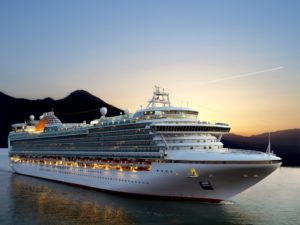Mobility challenges no longer mean a life sentence stuck in your hometown and never getting to see and experience what the world and the varying cultures it has to offer. Many cruise line operators have already incorporated the latest designs that take into account the challenges faced by travellers with mobility issues, allowing them to see the world.
Here are the common features and amenities found in most cruise ships that will help you travel to world by sea.
What to Expect Onboard
Although all cruise ships, even those registered outside the US but passing through ports of call in its territories are required to comply with the Americans with Disabilities Act (ADA), there are still no global standards regulating accessibility features in cruise ships.
However, major cruise operators have begun to excel in physical accessibility and continue to implement improvements to make your stay as comfortable as possible. On board, especially with reputable cruise liners and newer ships, accessible cabins are available for those with mobility challenges.
It features wider staterooms, lower door sills and ramped entryways. Bathroom doors are wider with roll-in showers, grab bars and adequate turning spaces for wheelchairs. Other touches include a lower washbasin, a fold-down shower seat, handheld showerheads, higher toilet as well as lower closet rods.
Public areas, such as dining and entertainment amenities, also meet the needs of the physically challenged. All gangways and gangplanks are wide enough to accommodate the standard wheelchair and scooter. Browse through disability scooters for sale before joining a cruise because the ship is a safe and fun place to explore on your own.
Dining areas and are all accessible using mobility aids, while theatres feature ramps and wheelchair or scooter parking spots with a good view of the stage — some public toilets strategically located around the ship feature automatic doors to accommodate mobility-challenged guests.
What to Expect Ashore
 While not all ports of call are fully accessible to those cruising with mobility aids, cruise line operators and ports do their best to provide ramps and trolleys, so everyone can come safely ashore. Wheelchair assistance teams are always available on standby during shore days as well.
While not all ports of call are fully accessible to those cruising with mobility aids, cruise line operators and ports do their best to provide ramps and trolleys, so everyone can come safely ashore. Wheelchair assistance teams are always available on standby during shore days as well.
Major cruise companies even have their own private islands that are fully accessible. All ports of call will have information on the level of accessibility. For cruise stops without a port, special gangway access to assist in tendering is not a guarantee, so it’s best to select an itinerary that has limited cruise stops using tenders.
Stay on board and enjoy the ship and its planned activities while on a stop that only offers tender access. The cruise director and their staff will always make sure to have many activities and entertainment options lined up even during shore days.
Cruising even for the mobility challenged can be incredibly fun and comfortable with the enhancements the cruise industry has implemented through the years. Mobility issues are no longer a barrier to travel and see the world. Start making a bucket list of destinations because these goals might just be within reach if you consider travelling by sea.

